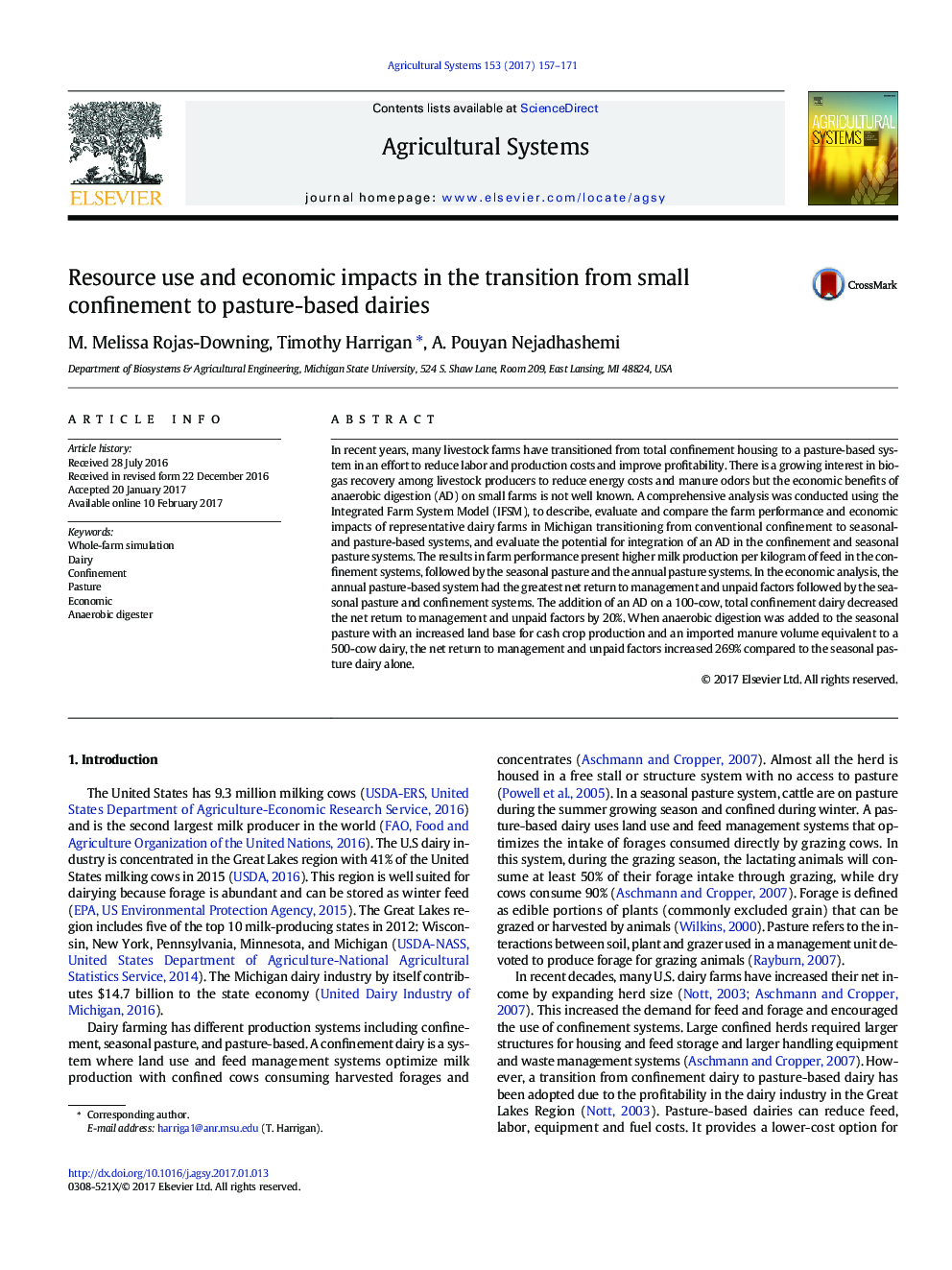| کد مقاله | کد نشریه | سال انتشار | مقاله انگلیسی | نسخه تمام متن |
|---|---|---|---|---|
| 5759753 | 1623217 | 2017 | 15 صفحه PDF | دانلود رایگان |
- An economic and resource use comparison of five dairy systems was performed
- The integration of an anaerobic digester in two dairy systems was analyzed
- The pasture-based system had the greatest net return and confinement the lowest
- Integrating anaerobic digester into a crop/seasonal livestock system was feasible
- The addition of anaerobic digester is feasible if manure is imported into the farm
In recent years, many livestock farms have transitioned from total confinement housing to a pasture-based system in an effort to reduce labor and production costs and improve profitability. There is a growing interest in biogas recovery among livestock producers to reduce energy costs and manure odors but the economic benefits of anaerobic digestion (AD) on small farms is not well known. A comprehensive analysis was conducted using the Integrated Farm System Model (IFSM), to describe, evaluate and compare the farm performance and economic impacts of representative dairy farms in Michigan transitioning from conventional confinement to seasonal- and pasture-based systems, and evaluate the potential for integration of an AD in the confinement and seasonal pasture systems. The results in farm performance present higher milk production per kilogram of feed in the confinement systems, followed by the seasonal pasture and the annual pasture systems. In the economic analysis, the annual pasture-based system had the greatest net return to management and unpaid factors followed by the seasonal pasture and confinement systems. The addition of an AD on a 100-cow, total confinement dairy decreased the net return to management and unpaid factors by 20%. When anaerobic digestion was added to the seasonal pasture with an increased land base for cash crop production and an imported manure volume equivalent to a 500-cow dairy, the net return to management and unpaid factors increased 269% compared to the seasonal pasture dairy alone.
Journal: Agricultural Systems - Volume 153, May 2017, Pages 157-171
